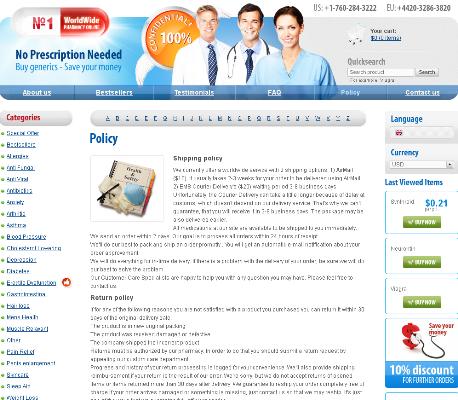Ventolin Vs. Other Inhalers: What’s the Difference?
Understanding Ventolin: Key Ingredients and Uses
Ventolin, also known by its generic name albuterol, is a bronchodilator. It works by relaxing the muscles in the airways and increasing airflow to the lungs, making it incredibly effective for quick relief of asthma symptoms. The key ingredient in Ventolin is albuterol sulfate, which targets the beta-2 adrenergic receptors in the lungs to help open up the airways efficiently. This makes it a popular choice for individuals needing immediate relief from shortness of breath, wheezing, and other asthma-related symptoms.
Below is a table highlighting Ventolin's key attributes:
| Attribute | Details | |--------------------|-----------------------------------| | Active Ingredient | Albuterol Sulfate | | Mechanism of Action| Bronchodilation | | Primary Use | Quick relief of asthma symptoms | | Onset of Action | Within minutes |
By understanding these core aspects, users can better appreciate how Ventolin serves as a critical tool in managing asthma.
Comparing Common Inhalers: Types and Mechanisms

In the world of inhalers, several types serve distinct purposes and employ different mechanisms. Metered-dose inhalers (MDIs), like Ventolin, deliver a specific amount of medication in aerosol form directly to the lungs. They are popular for their quick relief of symptoms and ease of use. Dry powder inhalers (DPIs), on the other hand, require the user to inhale forcefully to release the powdered medication. DPIs are often preferred for their portability and lack of propellants.
Nebulizers offer another option, turning liquid medication into a fine mist for inhalation over a longer period, making them ideal for severe cases or young children. Understanding these various mechanisms helps in making informed choices about asthma treatment, ensuring that Ventolin or another inhaler meets specific health needs effectively.
Effectiveness of Ventolin Vs. Alternative Inhalers
When it comes to treating asthma and chronic obstructive pulmonary disease (COPD), Ventolin is a well-known name, primarily due to its active ingredient, albuterol, which quickly relaxes airway muscles and eases breathing. Ventolin is popular for delivering fast relief during an asthma attack, making it a staple in many emergency asthma kits.
Comparatively, there are other inhalers like corticosteroids and long-acting bronchodilators that serve different purposes. Corticosteroids focus on reducing inflammation over time and are not intended for immediate relief, whereas long-acting bronchodilators maintain open airways but take longer to kick in.
Effectiveness largely depends on the use-case scenario. Ventolin shines in its rapid-action capability for sudden symptoms, while alternative inhalers excel in long-term management and preventive care. This distinction is crucial for personalized asthma treatment plans.
Side Effects: Ventolin in Contrast to Others

When comparing Ventolin to other inhalers, one should be aware of different side effect profiles. Ventolin, a popular bronchodilator, may cause side effects such as tremors, headaches, and an increased heart rate. These effects are generally considered mild but can be discomforting for some users.
In contrast, alternative inhalers, such as corticosteroid-based ones, may carry a higher risk of fungal infections in the mouth, hoarseness, and potential bone density reduction with long-term use. Knowing these differences is crucial for patients to make informed decisions about their asthma management.
Additionally, combination inhalers that include both bronchodilators and steroids might present a broader range of side effects. It’s important to consult healthcare providers to balance benefits and risks and tailor asthma treatment to individual needs, ensuring optimal health outcomes.
Usage Instructions: Do's and Don'ts for Inhalers
When using inhalers like Ventolin, it is crucial to follow the instructions correctly for optimal effectiveness. First, always shake the inhaler well before each use to ensure the medication is properly mixed. Taking care to exhale fully before inhaling the medication can enhance its effectiveness. Another important tip is to rinse your mouth after using the inhaler to prevent potential side effects like oral thrush.
Avoid sharing your inhaler with others, as this can spread infections and impact the device's effectiveness. Additionally, do not exceed the recommended dosage, as it can lead to adverse side effects. Each inhaler should be regularly cleaned to maintain hygiene and functionality.
Here's a quick reference table for effective inhaler usage:
| Do's | Don'ts |
|---|---|
| Shake the inhaler before use | Share your inhaler with others |
| Exhale fully before inhaling | Exceed the recommended dosage |
| Rinse your mouth after use | Neglect cleaning the inhaler |
By following these guidelines, you can ensure that you are using your Ventolin or other inhalers safely and effectively.
Making a Choice: Factors to Consider for Asthma Care
When choosing an inhaler for asthma care, it's essential to consider several factors to ensure optimal management. Firstly, evaluate the active ingredients. Ventolin contains albuterol, which is rapid-acting, whereas other inhalers might use medications like salmeterol for long-term control. Secondly, assess the delivery mechanism—MDIs, DPIs, and nebulizers each have unique benefits. Additionally, consider the side effect profiles; some inhalers may cause more systemic effects. Lastly, discuss with your healthcare provider to tailor the choice based on your asthma severity and lifestyle needs.

